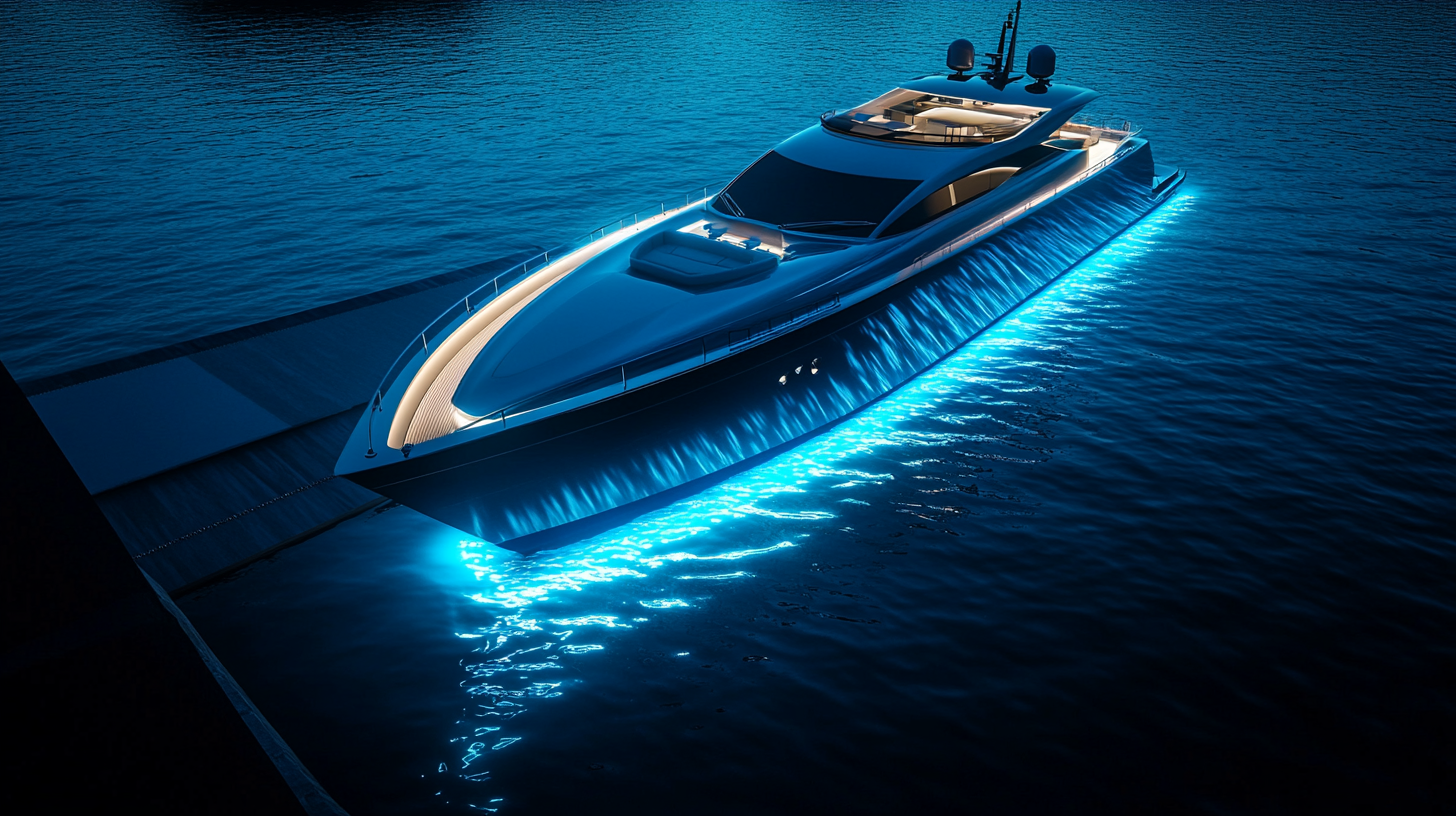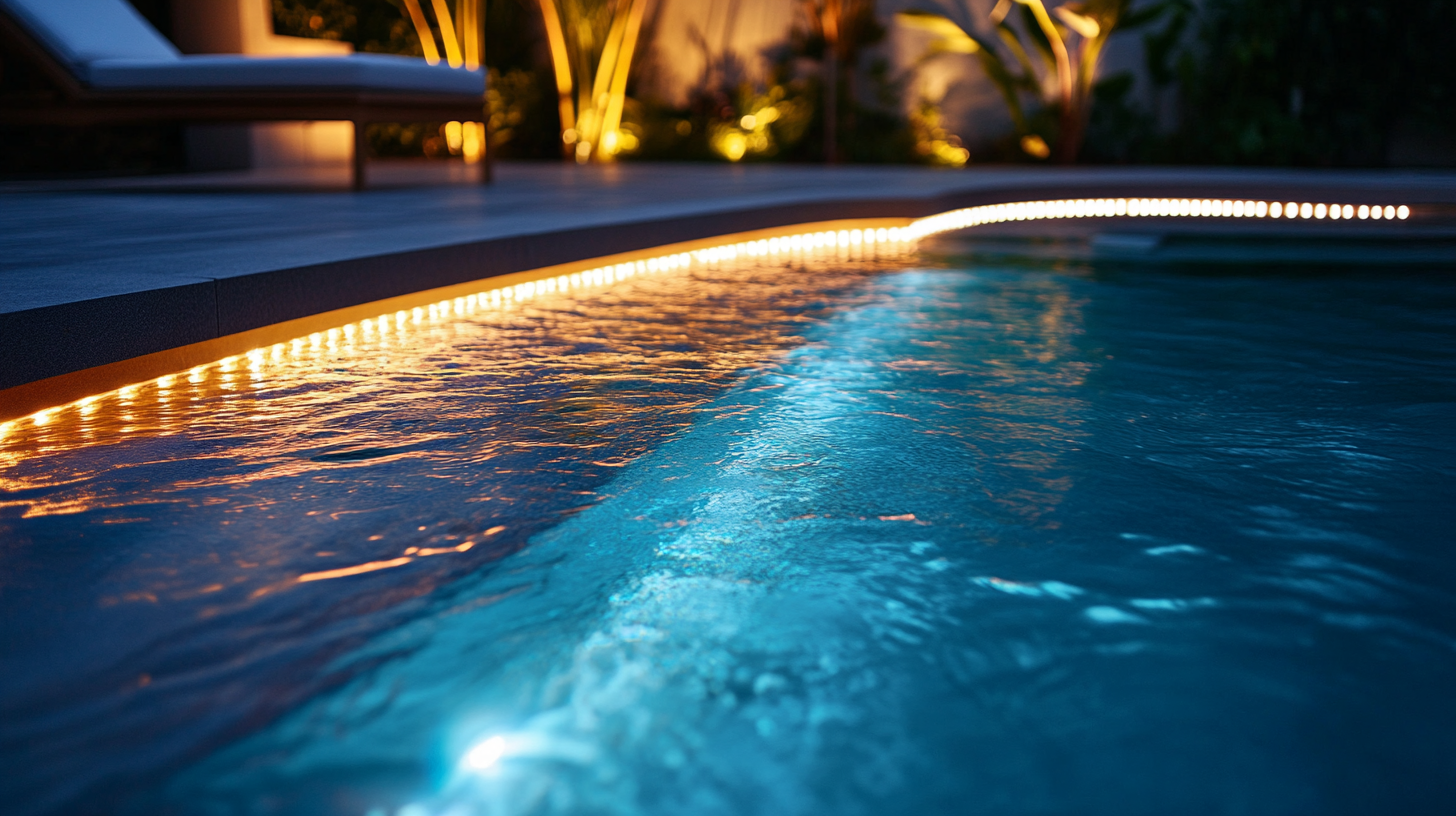How to choose eco-friendly underwater boat lights
When it comes to enhancing your boat’s appearance or improving its functionality, installing underwater lights is a popular choice, but what if you could combine style with sustainability? When looking for eco-friendly lighting options, it’s all about selecting fixtures that reduce environmental impact while still meeting your needs as a boater. Not all underwater lights are created equal, and some are much better for the planet than others. So, let’s dive into the key features to look for in green boating lights.
One of the first things you’ll notice is the growing popularity of LED technology in the world of underwater lights. LEDs use far less energy than traditional incandescent or halogen options, so by making this switch, you’re already taking a step toward a more sustainable choice. Beyond their energy efficiency, LED lights don’t contain harmful substances like mercury or lead, making them safer for marine ecosystems.
Another aspect to consider is the life expectancy of the lights you choose. By opting for longer-lasting products, you reduce the need for constant replacements, ultimately minimizing waste. When shopping around, check for certifications or labels that indicate whether the underwater lights meet certain environmental standards. Some certifications to look for include Energy Star ratings or eco-labels that signify reduced energy consumption and minimal toxic content.
When it comes to finding the right balance between performance and responsibility, choosing tips from seasoned boaters can be incredibly helpful. Many experienced green boating enthusiasts recommend selecting products from companies that are committed to sustainability not just in their final product, but also in their manufacturing processes. Simple choices like this can make a big difference – both in lowering your carbon footprint and preserving the beauty of underwater wildlife.
Optimizing energy efficiency and brightness
When you’re choosing eco-friendly underwater lights, finding the right balance between energy efficiency and brightness is key. After all, you want your boat to look stunning without draining your battery or harming the environment. LED technology continues to set the standard here, not just because it’s low-energy but also for its remarkable brightness output with minimal power consumption. This means you’ll not only save on energy but also enjoy well-lit waters beneath your boat.
The trick is to look at the lumens-to-watt ratio, which essentially tells you how much light you get for each unit of power consumed. High-quality LED fixtures can provide the same or even better brightness than traditional lights, but with a fraction of the energy use. That’s a win for your boat and a win for the planet. You don’t need to install super bright lights to make an impact either; sometimes, just choosing the right color temperature can enhance visibility without requiring an energy surge.
Efficiency doesn’t mean sacrificing fun. Many eco-conscious brands design their underwater lights with dimmable options, so you can adjust the brightness based on your mood or usage needs. You’re able to run the lights at full capacity when necessary or lower the brightness during more relaxed evening settings. This feature not only optimizes energy usage but also allows you to stay in control of how flashy—or eco-friendly—you want to be at all times.
Speaking of saving energy, select a voltage that aligns with your boat’s power system. Many LED models are available in low-voltage versions, specifically designed for marine settings. Not only do they reduce overall energy consumption, but they also tend to be safer and longer-lasting in marine environments. If you want to take your eco-friendly game up a notch, opt for solar-powered underwater lights where feasible. Not only are these completely self-sufficient, but they also allow you to bypass worries about excess power drain altogether.
Ultimately, optimizing your boat’s underwater lights for energy efficiency without sacrificing brightness means you can enjoy stunning views without damaging the environment, and that’s a key part of green boating. Whether it’s through efficient LEDs, dimmable controls, or even solar options, there are plenty of ways to ensure you’re staying eco-conscious while outfitting your vessel with beautiful lighting.
Material durability and environmental impact
When considering eco-friendly underwater lights for your boat, one of the most important factors to weigh is the durability of the materials used in manufacturing the fixtures and their long-term environmental impact. After all, these lights will have to battle the corrosive properties of saltwater, vibrations from the engine, and any debris they may encounter underwater. Choosing high-quality, durable materials not only ensures that your lights last longer, reducing the need for frequent replacements, but also minimizes the strain on natural resources by cutting down on waste. This is a win-win for both the environment and your wallet.
Many eco-friendly underwater lights are made from corrosion-resistant materials like marine-grade stainless steel, aluminum, or high-quality polycarbonate. Marine-grade stainless steel, in particular, is highly resistant to rust and degradation in saltwater, ensuring longevity in even the harshest conditions. However, if you’re looking for a lighter alternative that doesn’t compromise on durability, aluminum can also be an excellent choice. Both materials are recyclable, enhancing their eco-credentials compared to others like plastic, which may degrade into harmful microplastics over time.
Light housing isn’t the only aspect to focus on. The quality of silicone seals and gaskets is another critical component. Poor-quality seals may lead to water seepage, reducing the lifespan of your underwater lights and increasing the risk of water contamination due to light fixture breakdown. It’s always worth researching eco-conscious brands that prioritize long-lasting, reliable sealing solutions to avoid these pitfalls.
Moving beyond material choices, it’s crucial to consider how these products are made and what happens once they reach the end of their lifespan. Fixtures that are designed to be easily recyclable are always a better option than those made from a mix of non-recyclable materials. Some marine light manufacturers take this a step further by reducing their environmental footprint during production, such as using renewable energy to power their plants or sourcing recycled materials. Opting for brands with transparent sustainability initiatives not only ensures you are choosing eco-friendly lighting but also supports environmentally responsible business practices.
Lastly, consider the impacts of light pollution on marine life. Excessive light or the wrong wavelengths can disturb the natural behavior of fish, coral reefs, and other underwater ecosystems. Look for fixtures that offer adjustable settings, allowing you to minimize the lights’ environmental impact while still enjoying the aesthetic benefits. Lights with automated dimming features can be especially useful in ensuring you don’t unintentionally turn your underwater oasis into a source of sea-life disruption.
By selecting durable, eco-friendly underwater lights made with sustainable materials, you’re contributing to the larger movement of green boating, all while ensuring your vessel is outfitted with top-tier, long-lasting gear. Making careful choices in material sustainability and environmental consideration will give you peace of mind, knowing you’re protecting the oceans that make your boating experiences so memorable.
Evaluating color temperature and light spread
When evaluating the color temperature of your eco-friendly underwater lights, it’s important to consider both the aesthetic and environmental impacts. Color temperature, measured in Kelvin (K), dictates the “warmth” or “coolness” of the light emitted by the fixture. Warmer lights, typically in the range of 2,700K to 3,500K, have a soft yellow hue, while cooler lights, around 5,000K to 6,500K, produce a crisp, white glow. For underwater applications, the choice of color temperature can significantly affect both how your boat looks and how the light interacts with the underwater environment.
A warmer light tends to create a more relaxed and inviting ambiance, ideal for creating a soft glow in shallower waters or when moored in tranquil settings. However, warmer tones may not penetrate water as effectively, particularly in deeper conditions, limiting their functional visibility. On the other hand, cooler lights tend to offer greater visibility and can project light further underwater, which can be crucial for practical uses like night diving or spotting marine life. Choosing the right color temperature involves balancing aesthetics with practical needs, ensuring you won’t disturb the marine ecosystem or contribute to light pollution.
Light spread is another critical factor. Here, it’s essential to understand how the light will disperse through the water, offering either an intense, focused beam or a broader, more diffused glow. Underwater light fixtures typically come with different beam angle options, measured in degrees. A narrow beam (below 20 degrees) will concentrate light in a smaller area, which may be useful for highlighting specific underwater features or for focused lighting needs. A wider beam (up to 60 degrees or more) spreads the light over a larger area, creating a broader, more dispersed glow beneath your boat. For many green boating enthusiasts, a wider beam angle is preferable because it generates a gentler, more natural illumination that’s less likely to disturb marine wildlife.
Balancing these two factors—color temperature and beam angle—can help minimize your boat’s ecological impact while still achieving the desired visual effects. For those specifically aiming to reduce light pollution, mimicking natural moonlight (color temperatures around 4,100K to 4,500K) might be the best option. This range offers balanced visibility without overwhelming nearby aquatic life. Additionally, selecting lights that allow adjustable settings for both brightness and color temperature will give you more control, letting you fine-tune the lighting in response to different surroundings or times of day.
Finally, keep in mind the potential for light pollution, particularly in areas near protected waters or nature reserves. Light emitted from underwater lights can interfere with the nocturnal habits of nearby marine species, affecting everything from feeding cycles to navigation. Choosing eco-friendly fixtures that are specifically designed to minimize excess light diffusion will help you light up your boat’s surroundings responsibly.
By factoring in both color temperature and light spread, you are not only enhancing the aesthetic of your boat but also adhering to environmentally responsible green boating practices.
Choosing a reliable eco-conscious manufacturer
When it comes to choosing a reliable eco-conscious manufacturer for your underwater boat lights, it goes beyond just picking a brand you’ve heard about. The goal is to invest in a company that’s committed to sustainability throughout its entire operation—because what happens behind the scenes matters just as much as the final product. A truly responsible manufacturer will take steps to minimize its environmental impact from design to production, offering you more than just a set of lights—they’re offering peace of mind.
To ensure you’re picking the right partner for your green boating journey, start by looking for brands that are transparent about their sustainability efforts. Companies that openly share details about their production methods, the materials they source, and their carbon footprint are more likely to be genuinely committed to making eco-friendly products. Certifications or memberships in environmental organizations can also serve as trusted indicators that a manufacturer is serious about protecting the planet. Try to find manufacturers who hold eco-certifications like ISO 14001 (which relates to environmental management) or those involved in initiatives like the “Green Marine” program.
Another important aspect to consider is how the manufacturer sources its materials. A company that uses recycled or sustainably harvested materials in the production of its underwater lights is certainly on the right track. This could include things such as recycled metals or biodegradable plastics that minimize long-term pollution in our oceans. Some brands also prioritize using non-toxic coatings and finishes that won’t leach harmful chemicals into the water, safeguarding marine ecosystems from unnecessary harm.
Pay attention to whether these manufacturers are implementing energy-efficient practices within their production facilities. Are they using renewable energy such as solar or wind power to run their factories? Do they have processes in place to reduce their waste output? All of this plays a huge role in reducing the overall carbon footprint of the products you buy, ensuring you’re making a more eco-friendly choice throughout the lifecycle of your underwater lights.
Customer support and warranties are yet another telling factor when evaluating eco-conscious manufacturers. A company that stands behind the longevity of its product—offering long warranties and customer service that supports repair over replacement—shows that it’s not just chasing fast sales but is in it for the long haul. Long-lasting products mean fewer replacements, which in turn, leads to less environmental waste and contributes to sustainable living.
And let’s not forget innovation. Leaders in the green boating sector often innovate with the future in mind, pushing the boundary of what’s possible for eco-friendly boating accessories. These might include lights with smart energy-saving features, like auto-dimming based on surroundings or solar-powered designs that eliminate the need for traditional electricity altogether. The key is to find a manufacturer continuously looking for ways to blend technology with sustainability, providing boaters with cutting-edge products that don’t harm the planet.
This kind of forward-thinking approach not only saves the environment but also saves you money in the long run. High-efficiency products reduce energy consumption and decrease the need for frequent replacements, making your boating experience even more rewarding.
Lastly, check out customer reviews and case studies. Often the best advice for choosing reliable manufacturers comes from fellow boaters who have already made the switch to eco-friendly solutions. Their experiences can provide extra assurance that you’re making a wise investment with the right company. Boating forums and product review pages can be goldmines for these kinds of insights, guiding you toward manufacturers who share your commitment to sustainability.
Choosing the right manufacturer for your eco-friendly underwater lights is about much more than just the initial product cost. Focus on brands that prioritize environmentally-friendly operations, use sustainable materials, offer long-lasting, innovative products, and provide stellar customer service. By putting your trust in a reliable, eco-conscious manufacturer, you’re making an investment in the future health of our oceans—while ensuring your boat looks amazing, of course.


